Have you ever taken one of those color vision tests? They’re used to determine if you have color vision deficiency, a condition that’s usually inherited. If you have poor color vision, your ability to see the difference between specific colors is lessened. You may have one of the four types of color blindness!
People with color vision deficiency do not always know they have it! Usually, people find out in real-life situations, such as pulling up to traffic lights and not knowing exactly what colors are showing. Most commonly, people affected by the four types of color blindness see different shades of red and green and/or different shades of blue and yellow.
What is true color blindness?

Although many people equate color vision deficiency with color blindness, true color blindness actually describes someone who only sees in shades of black and white — which is rare. But here’s a quick to help determine whether you have a color vision deficiency or not. Only people with perfect color vision who aren’t impacted by any of the four types of color blindness can read these eight words without hesitation! Can you? We’ll give you the answers at the end of the article.
1. Can you see the blue word?

Interestingly, while individuals with color blindness may struggle with distinguishing shades of blue from other colors, blue itself is often a color they can perceive relatively well. This is because blue is detected by different receptors in the eye compared to red and green, which are the colors most affected by color blindness. Therefore, blue can sometimes serve as a reference point or anchor for those with color vision deficiencies.
2. Can you see the green word?

Some individuals may perceive green accurately while struggling with other colors. Green’s prominence in nature and its frequent use in signals and signage mean that color-blind individuals often develop strategies to navigate its various shades, relying on context cues or alternative visual information to interpret its significance
3. Can you see the purple word?

For individuals with red-green color blindness, purple may appear closer to blue or red, depending on the specific deficiency. Similarly, those with blue-yellow color blindness may have difficulty perceiving the red component of purple, causing it to appear more blue. Despite these challenges, the distinctiveness of purple in many contexts, along with surrounding cues, can aid color-blind individuals in identifying it, albeit with potential variations in perception compared to those with normal color vision.
4. Can you see the pink word?

Pink may appear duller or closer to gray, especially in contexts where it’s not clearly distinguished from red. However, because pink is often used in distinct contexts, such as clothing, branding, or signage, individuals with color vision deficiencies can often rely on contextual cues to identify it. Despite potential difficulties, variations in brightness and surrounding colors can help differentiate pink from its surroundings, assisting color-blind individuals in recognizing its presence.
5. Can you see the blue word?

One fascinating aspect of color blindness and blue perception lies in its role as a reference point for those with color vision deficiencies. While individuals with red-green color blindness struggle with distinguishing between these colors, blue is often perceived accurately due to its detection by different receptors in the eye.





